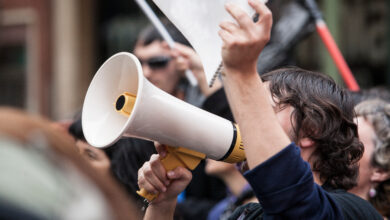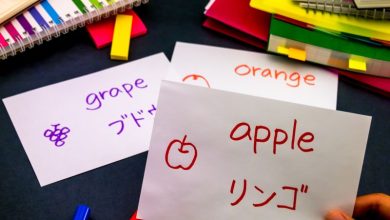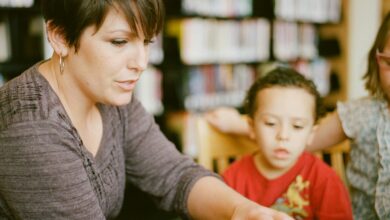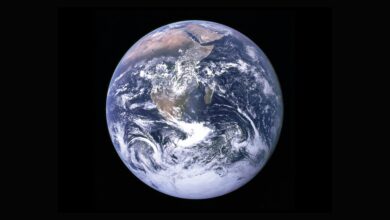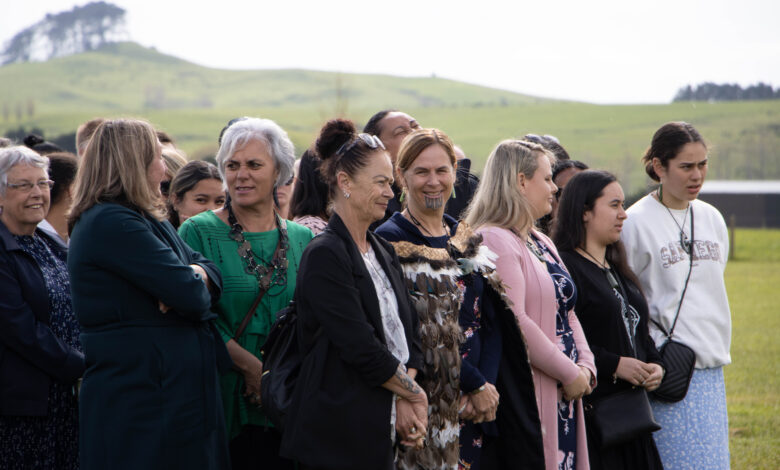
Education is about opportunities, about providing young people with the tools and skills to fill their kete (basket) with a whole lot of opportunity to navigate through a challenging and ever-changing world.
I have been in education for 23 years, most recently gaining a Principalship at Mangakahia Area School. As I reflect on the educational changes that have taken place over the past 23 years, whether as a teacher, middle leader, senior leader or principal, what remains the same is that education matters, and children matter.
Read our latest print issue here.
Crucially, creating an educational environment of equity and excellence for all learners continues to be challenging. In some respects, the issues and challenges we would like to tackle in education have remained the same for an extended period. We’re still discussing ways to empower our rangatahi, to provide adequate pastoral support and to ensure their wellbeing not just in the classroom, but that the wider community is being catered for. Equitable educational outcomes for all our students is the focus.
I believe in structures, systems and processes. But it’s about having a really clear vision. Why are we implementing these programmes? What do we currently see happening? It’s about identifying what is and isn’t working for our rangatahi. And that doesn’t necessarily mean starting from scratch, but identifying how we can add value, and enrich our systems to ensure the very best outcomes for our young people.
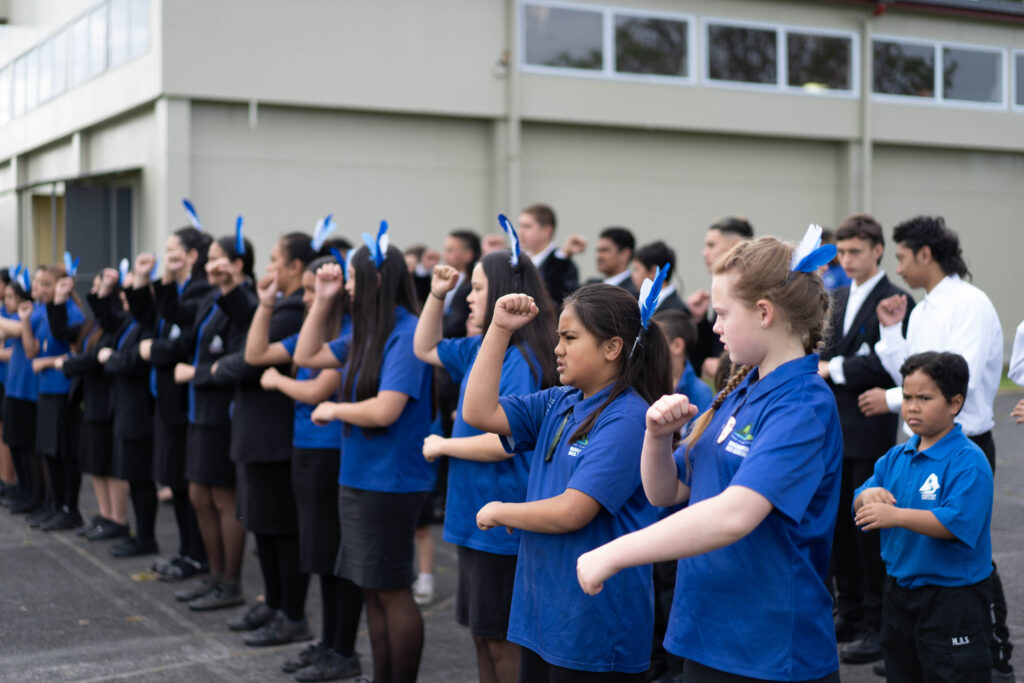
Building a collective identity
From the beginning of my time in education, I always thought secondary school was the place to be. But coming to Mangakahia Area School, I realised: what a wonderful opportunity. Area schools can truly be localised, and that’s a real strength.
What’s unique about area schools is that there’s opportunity to be fully engaged. You have ākonga from the time they’re nohinohi (little). This presents us with the opportunity to fully put that korowai around them and provide a robust, purposeful, and relevant curriculum for them.
That’s what’s exciting for me. We’re sitting on a goldmine, and I think that’s yet to be fully tapped into.
Coming to the school, I wanted to capture the “low hanging fruit” straight away. From a kura which had so much whakamā (shame) in its past, I wanted to build pride, relevance and identity for students. On my second day, I made a point of addressing our uniform. Now we have beautiful uniform standards, and it’s a way of instilling pride in the cohort.
Additionally, we are a small school of 93 students, and we have a primary, intermediate and high school. I wondered, ‘why are they sitting in isolation from each other?’ I began thinking about ways of bringing the schools together. How could we create a community across schools? I began thinking about our shared spaces, and creating days of shared activities where the older students and the younger children were able to interact with each other.
The vision of a shared community across our primary, intermediate and high schools have also driven our staffing appointment decisions. We recently hired a teacher who brings expertise both in primary and secondary. Notwithstanding the importance of a thorough appointment process, we saw this as an opportunity to create continuity across the year groups. Here is an educator who understands the context from which older students come from, and the context which younger ākonga will mature into.
In just a short time, building a collective identity to be proud of has made a huge difference in our kura.
Mana ōrite
Mangakahia Area school is 93 per cent Māori. That’s a collective identity and an aspect of our kura that hasn’t been fully explored. If we can do kapa haka in the afternoon, and we can do waiata, then why can’t we tap into the whakapapa of this takiwā (area)? There are five hapū around this takiwā, and they whakapapa to Ngāpuhi and Parawhau iwi. Kupe, Nōkutawhiti and Rāhiri have strong links in this area. The pūrakahu and pakiwaitara (stories) from this area are rich and plentiful. We need to dip into these stories and think about how we can build leaders for the future.
For Mangakahia Area School, it makes complete sense to have Te Ao Haka going across the school. The achievement standards are good for the older students, but I wanted to get the kuia in for the younger kids, so they’re learning things like how to look after the flax trees, and having that kind of experience in the māra (garden). And then you have the kuia teaching some of the babies how to weave, or make poi.
Next year, we will be providing kai by setting up our own cafeteria. That means we can eat together. As well as eating together, the older students who want to take hospitality can serve the community. They’re not only achieving standards in the classroom, they’re bringing those skills into a practical context. That weaves together learning and community building, creating a wānanga model that embodies mana ōrite by prioritising and drawing on students’ indigeneity.
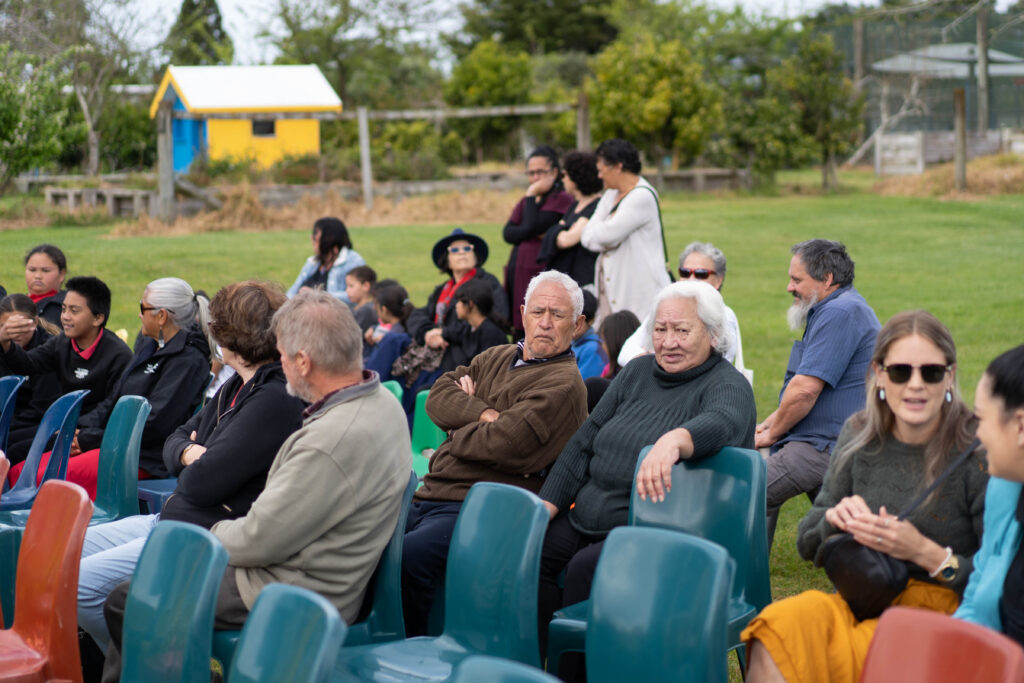
Cultural responsiveness is essential
Of course, every school’s cultural context will be different, and that’s important to note. Although we have all these new initiatives, such as the current curriculum refresh, they will only be effective if they are culturally responsive to the climate of the school. I believe that’s why we’re still trying to address the same issues in the education space. There has been a plethora of educationally focused initiatives delivered across schools over the years, however, the impact of these initiatives is only as good as the leadership implementing them; are they authentically and meaningfully fit for purpose, well understood, and delivered in response to the school’s cultural climate? For a curriculum to truly serve our rangatahi, it needs to be culturally responsive at a local level in relation to a school’s needs.
At Te Kura Takiwā O Mangakahia, we’re putting in four new subjects next year, because we want the curriculum to be meaningful and purposeful to the students here. Although we’re a small school, we do need choice. The option of studying via Correspondence where options are not readily available for our students is an area we are looking at to better serve. We’re rejigging the curriculum, rethinking our staffing and having key people with the expertise to give deliverables. We want to make sure the curriculum is fit for purpose.
We’ve had this education system for 108 years. My adage is that I always say education is like a car: every new initiative is a coat of paint on that car. We’ve just painted the car again, and it’s beautiful – but it’s the same car. Those tires are bald now, the system’s not working, and the door handles are nearly falling off. We need to change our direction around implementing the mana ōrite space of education in Aotearoa, as well as having a mātauranga Māori model. We’re going that way, but we need the opportunity to deliver those initiatives in the way that fits a school.
Our values: manaakitanga, mātauranga Māori, pono (honesty, sincerity), whakamana (empowerment), speak to the position we wish to take as a learning community. Our next step is to unpack these with our students and community. I want to represent those principles not just as words, but as an identity and a kaupapa that carries through not only our curriculum, but all teaching and learning experiences. I do this by questioning how an action or strategy creates mana and demonstrates manaakitanga. I want to build a real dialogue and share power with our young people in our education systems. He waka eke noa – we’re all in this together.
Mā te pā ka taea te whakatipu te tamaiti | It takes a village to raise a child
One of my key concerns is also around re-engaging stakeholders. Not just students and staff, but other key people like the caretaker, the gardener, whānau, the wider community.
It takes a village to raise a child, and teachers are raising children. But that doesn’t excuse significant others from the table.
The onus is on educators to provide the skills and tools for rangatahi to be global citizens, and the curriculum talks about confident, lifelong learners – but we only get them for school time. So how do we work together and ensure all stakeholders are at the table?
If we are to have high expectations and hopes for our young people, we also need to be clear and transparent with our whānau, who probably have the same high hopes and expectations, but need to be at the table so they truly understand where we’re heading and why.
I don’t see myself as the principal. I see myself as the person who has been given the privilege and the honour to sit on the chair. I’m just a part of the team, helping to collaboratively guide this exciting space. We want the whānau back here, and for us it’s about creating that welcoming space. Nau mai, haere mai to Te Kura Takiwā O Mangakahia. We are focusing on creating open communication, sending out messages to the wider community. I believe that’s what it means to look after this space: to champion key values and principles, and to consult with whānau to ensure our systems are fit for purpose and create the best outcomes for our youth.
We shouldn’t keep putting ambulances at the bottom of the cliff – we should be building fences at the top: creating strong communities to protect our vulnerable as they become the leaders of tomorrow.
As Dame Whina Cooper once said: “Take care of our children. Take care of what they hear, take care of what they see, take care of what they feel. For how the children grow, so will be the shape of Aotearoa.“
Maria Dunn is the Tumuaki (principal) of Te Kura Takiwā O Mangakahia, or Mangakahia Area School. She is the first wāhine Māori principal in the school’s history, and brings with her an extensive career in education, as well as a background in nursing and defence. She is currently completing a PhD, and has served as deputy principal at other schools including Kamo High School, Hamilton Girl’s High School, and Fairfield College.


